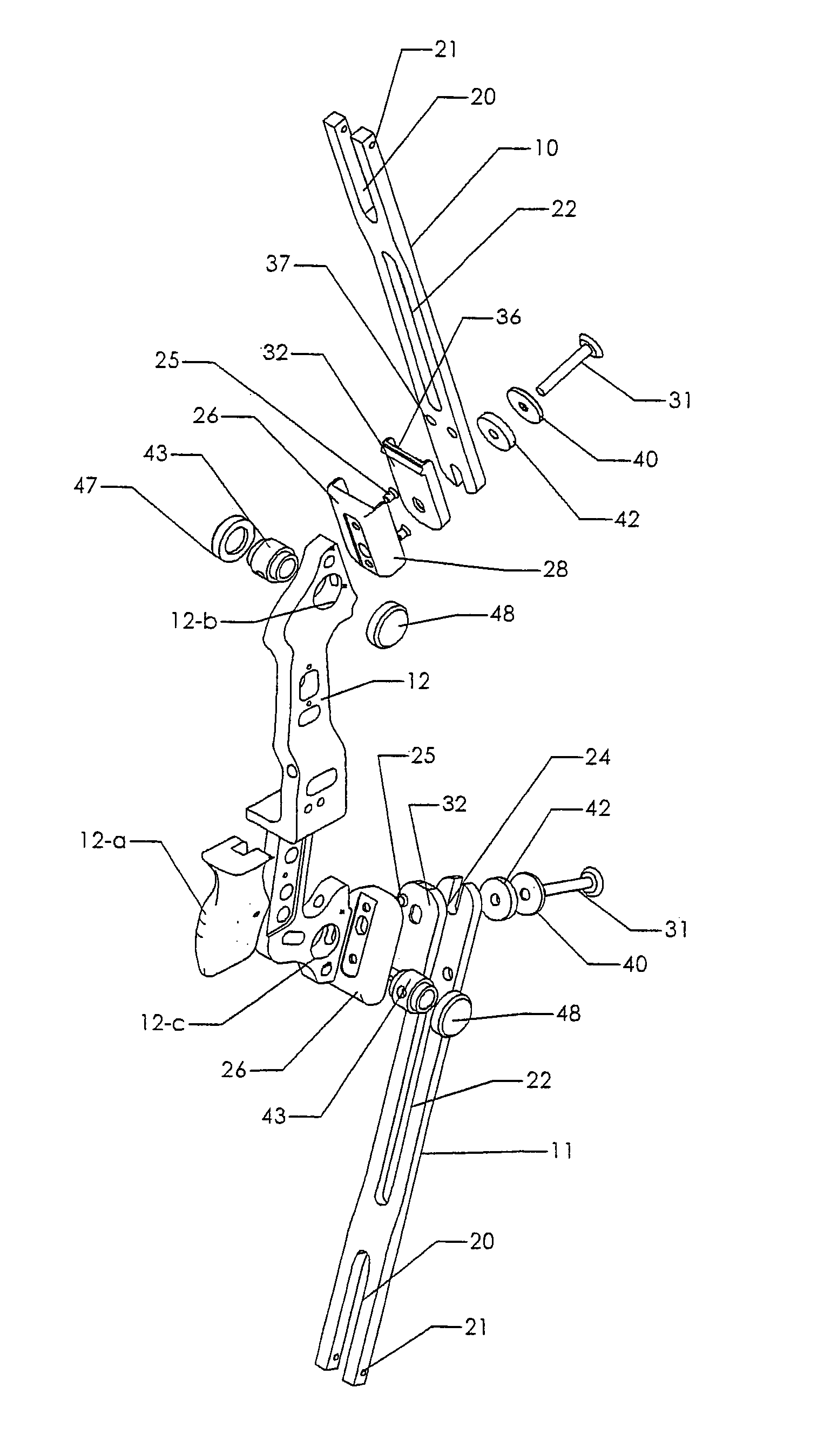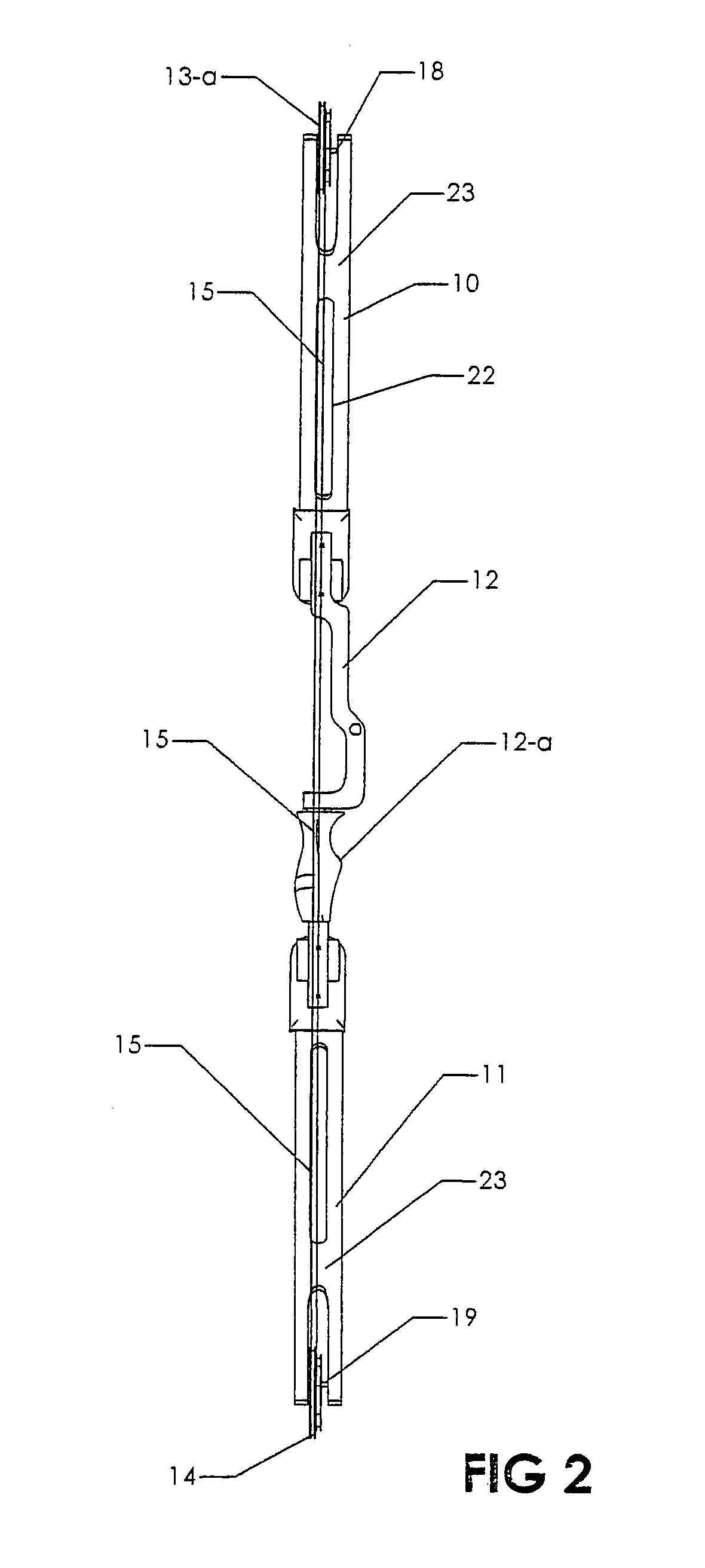Compound archery bow construction and methods of making and operating the bow
a technology of compound archery and construction methods, applied in the field of compound archery bow construction and methods of making and operating the bow, can solve the problems of unbalanced torque and flex stress on the upper and lower limbs of the bow, and the noise of the game, so as to achieve a better balanced bow, less torqueing stress, and more accurate
- Summary
- Abstract
- Description
- Claims
- Application Information
AI Technical Summary
Benefits of technology
Problems solved by technology
Method used
Image
Examples
Embodiment Construction
[0028]Referring more particularly to the accompanying drawings, and in the first instance to FIG. 1 thereof, the bow assembly comprises generally upper and lower resilient limbs generally designated 10 and 11 joined in the manner to be disclosed to a rigid riser, generally designated 12, which can be fashioned of aluminum or other suitable material. Revolvable mechanical advantage creating pulley members 13 and 14 are mounted laterally centrally at the outer ends of the limbs 10 and 11. The members 13 and 14 may comprise regular idler pulleys or eccentric pulleys and in FIG. 1 a regular pulley is shown at 13 and an eccentric pulley at 14. They operate in the usual manner to mount the bow string 15 shown in FIG. 1, which in the embodiment shown is part of the conventional tension cable system generally designated TC which extends between the opposite ends of the bow in the usual manner. The cables TC-1 and TC-2 of the conventional cable system, pass through spaced apart openings in a...
PUM
 Login to View More
Login to View More Abstract
Description
Claims
Application Information
 Login to View More
Login to View More - R&D
- Intellectual Property
- Life Sciences
- Materials
- Tech Scout
- Unparalleled Data Quality
- Higher Quality Content
- 60% Fewer Hallucinations
Browse by: Latest US Patents, China's latest patents, Technical Efficacy Thesaurus, Application Domain, Technology Topic, Popular Technical Reports.
© 2025 PatSnap. All rights reserved.Legal|Privacy policy|Modern Slavery Act Transparency Statement|Sitemap|About US| Contact US: help@patsnap.com



